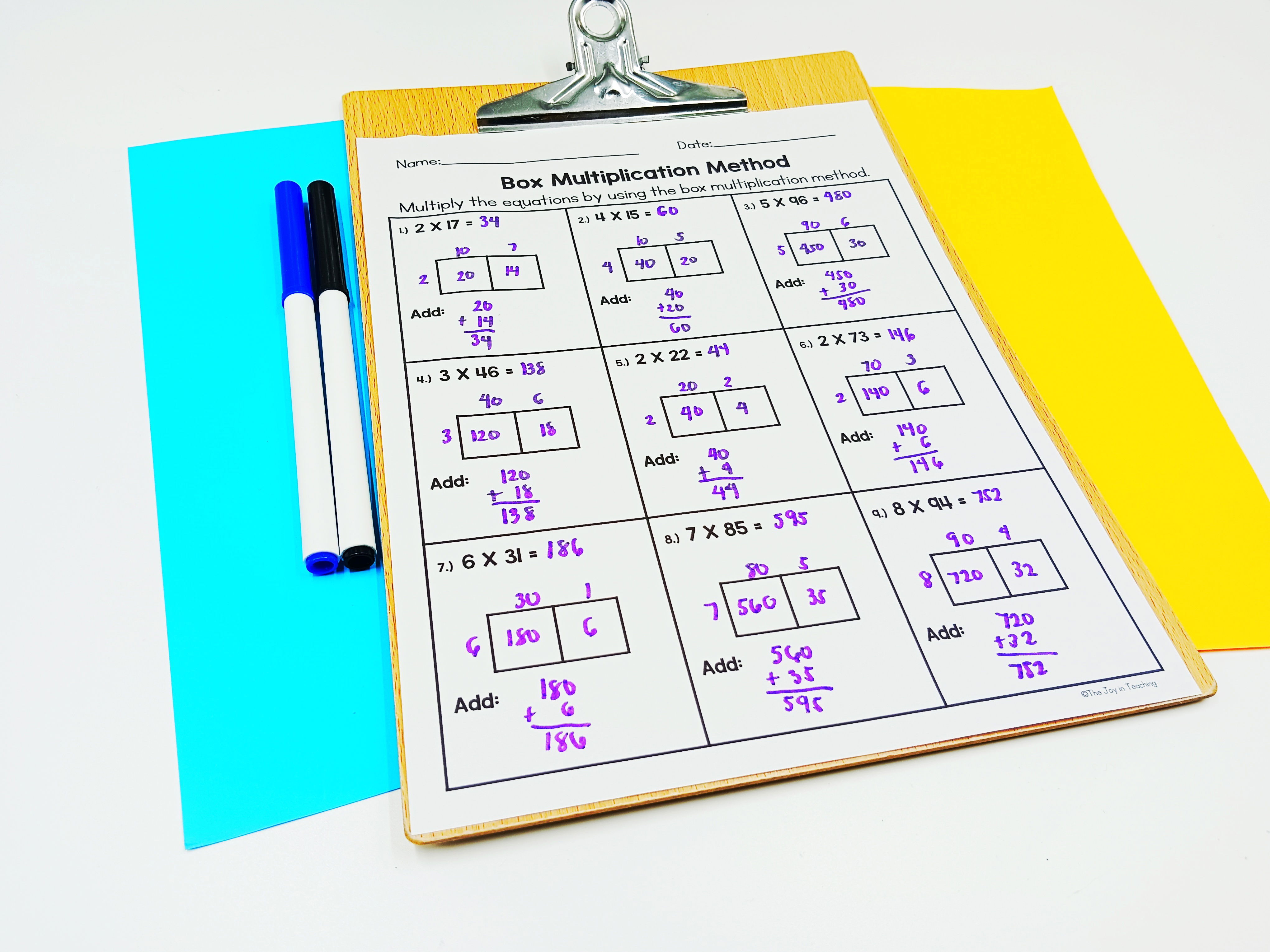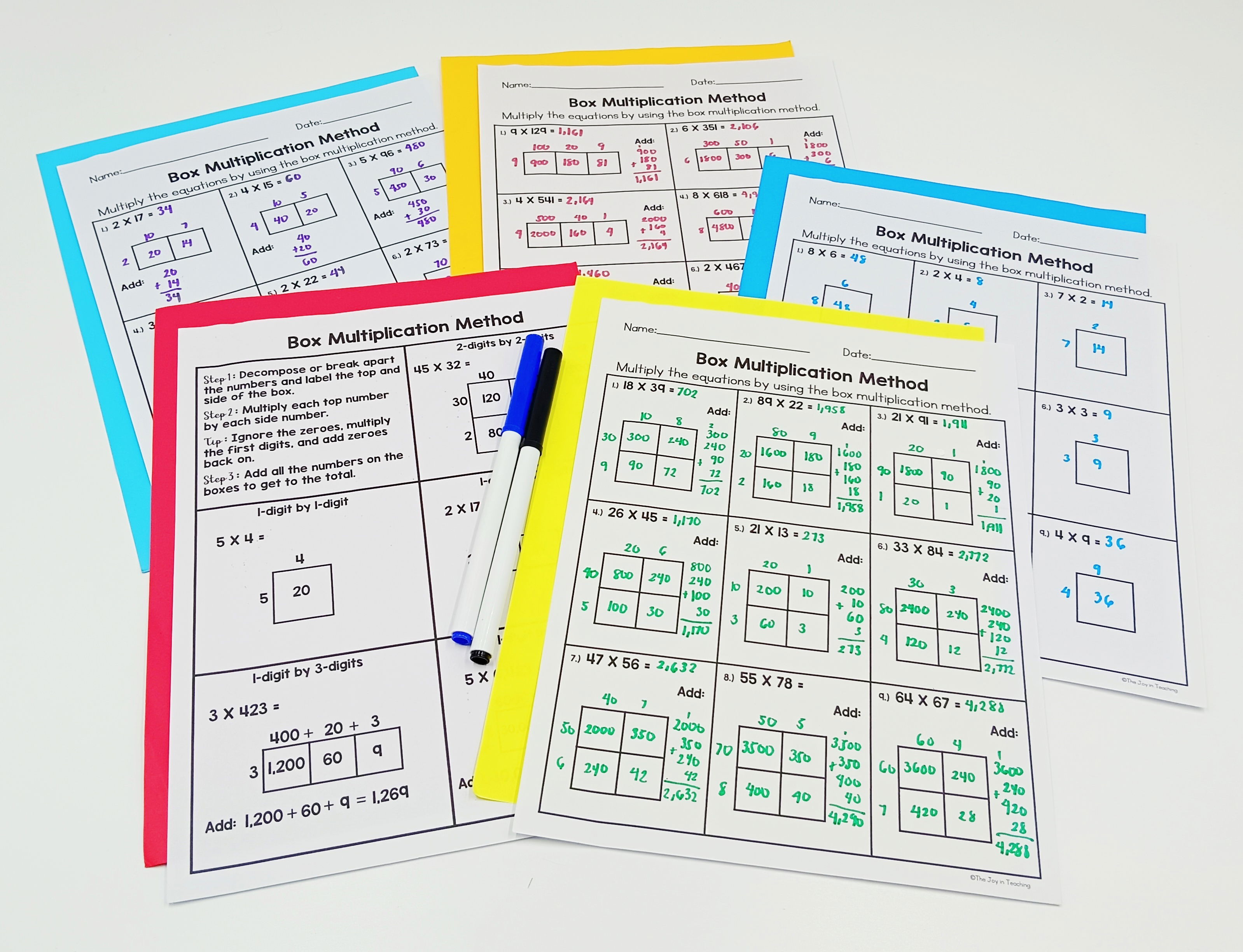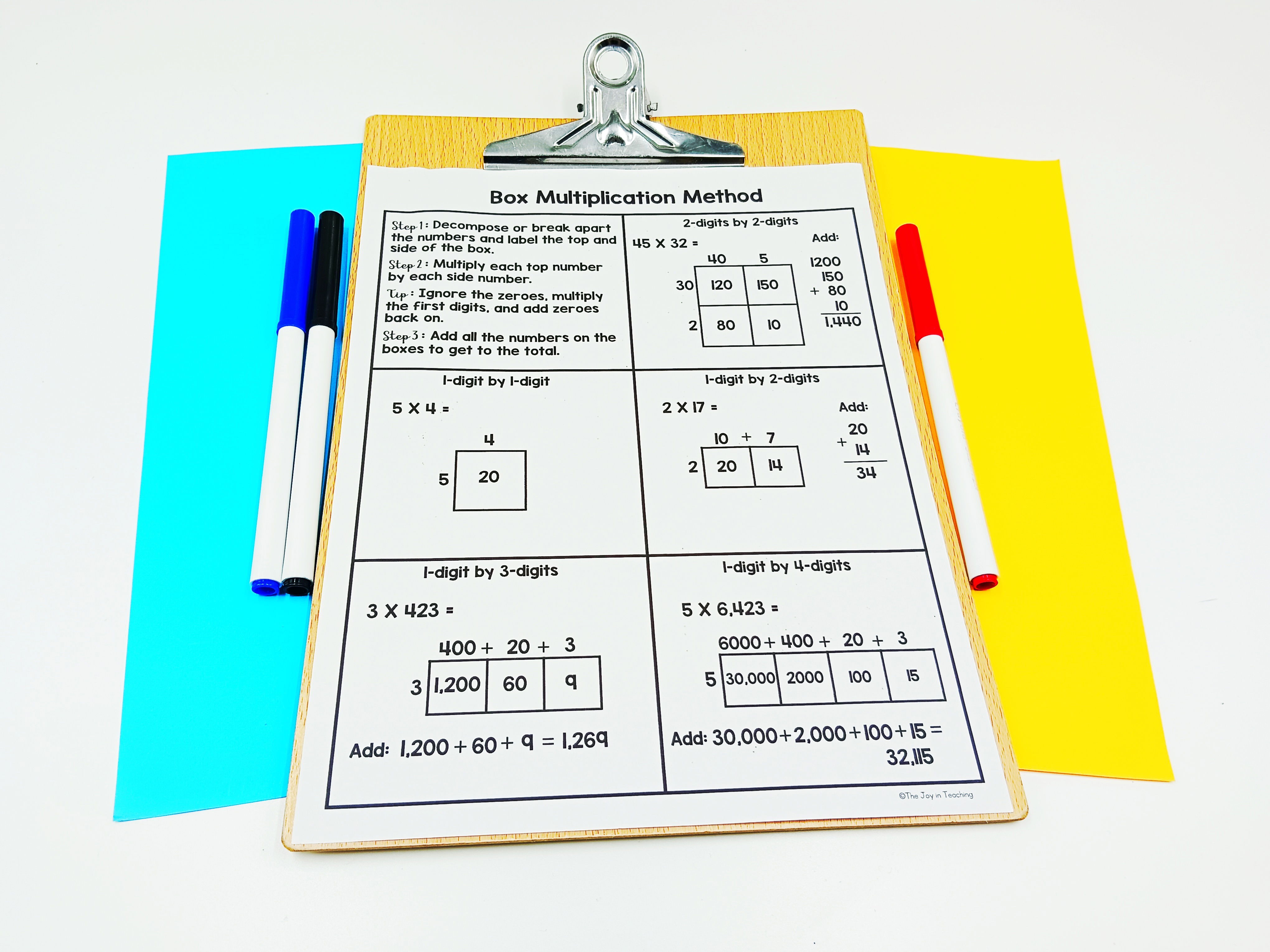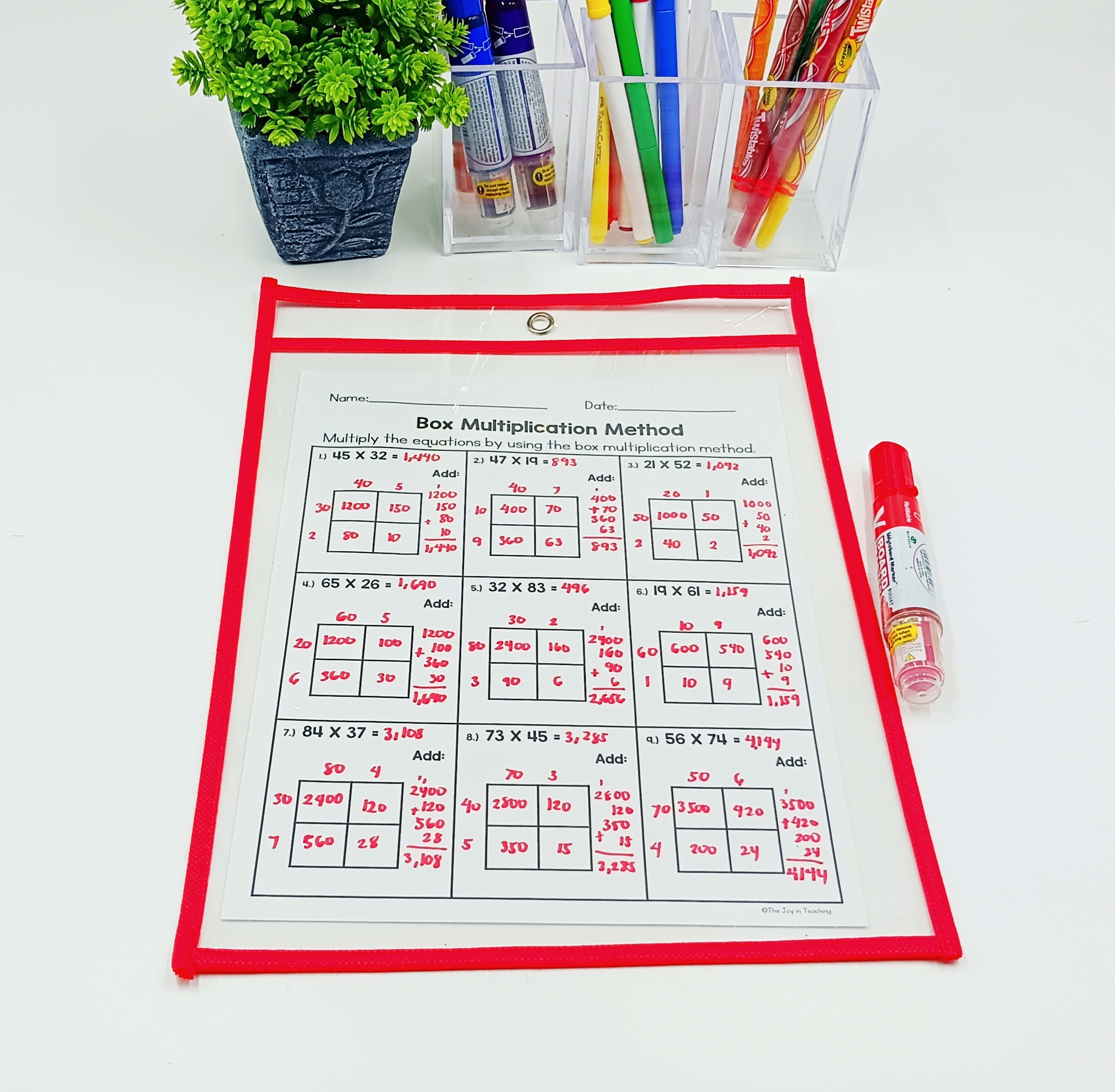How to Teach Box Multiplication: A Fun, and Engaging Guide for Teachers and Parents
Hello, fabulous teachers and super parents!
🌟Let’s talk multiplication. Specifically, the kind that doesn’t end in frustrated sighs, pencil-snapping moments, or kids suddenly needing urgent bathroom breaks. If you've ever found yourself thinking, "There has to be an easier way to teach this,"—good news, you're absolutely right.Today, we’re diving into the magical world of Box Multiplication—a method that brings clarity, structure, and even a sprinkle of joy to your math lessons. Whether you're wrangling a classroom of energetic 3rd graders/ 4th graders or helping your child at the kitchen table, this visual strategy might just become your new best friend.
💡 What Is Box Multiplication?

Box Multiplication (also known as area model multiplication) is a visual strategy for solving multiplication problems, especially larger ones that can feel overwhelming. Instead of trying to multiply big numbers all at once, this method breaks them down into smaller, friendlier pieces—like a math puzzle waiting to be solved. Picture this: you take a large multiplication problem and split it up into sections using a grid. You then multiply each section individually and add the results together. Voilà! You’ve just turned what looked like a math monster into a manageable, step-by-step activity.
🧠 Why Students (and Grown-Ups) Love It
There’s a reason why this method clicks for so many learners—it's approachable, organized, and even a bit satisfying (there’s something about those neat little boxes!). Here’s what makes it a winner:

- ✅ Visual learners thrive: The structure helps them "see" the math in action.
- ✅ Breaks down the overwhelm: One big problem becomes four smaller, doable ones.
- ✅ Reinforces place value understanding: Helps solidify concepts in a meaningful way.
- ✅ Engaging for hands-on learners: Especially when combined with markers, math games, or classroom challenges.
📏 Tied to the Standards
Yes, this method is fun—but it’s also backed by the Common Core. Specifically: CCSS.Math.Content.4.NBT.B.5
Multiply a whole number of up to four digits by a one-digit whole number, and multiply two two-digit numbers, using strategies based on place value and the properties of operations. In other words: you’re not just winging it—this method is right on target with grade-level expectations.
✨ How to Introduce Box Multiplication in Class
So, how do you roll this out without causing confusion or groans? Here’s a simple three-step breakdown:

Step 1: Decompose and Label
Take your two numbers and break them apart by place value. If you're solving 45 × 32, think of it as (40 + 5) × (30 + 2). Label your rows and columns on the box accordingly.
Step 2: Multiply Inside the Boxes
Multiply the row number by the column number for each section. Don’t worry about the zeros yet—just multiply the digits.
Step 3: Add It All Up
Once all four (or more) boxes are filled in, add them together. Ta-da! You’ve solved a big multiplication problem one little box at a time.
🎉 Make It Fun: Creative Classroom Ideas
Here’s where the magic happens—turning a math lesson into an experience.
🖍 Math Art
Use colored pencils or markers to color-code each part of the box. Students love using different colors for each product—it feels more like art class than math!
🏁 Multiplication Races
Split your class into teams and see who can complete their box first (correctly!). Add timers, cheering, and maybe even silly team names.
🧑🏫 Interactive Whiteboard Time
Project a blank box and have students come up and fill in a square one by one. Group solving builds confidence and team spirit.
🔁 Laminate and Reuse
Laminated grids are gold. Use dry-erase markers and build in daily practice without printing a mountain of copies.

😂 Real-Life Teacher Moment
Picture this: It’s raining. Your students are bouncier than usual. You’re feeling this close to turning on an educational video when inspiration strikes—you pull out a Box Multiplication activity. You begin with 23 × 15. One kid groans. Another says, “This looks hard.” But then you start drawing the box. You split the numbers. You write in the smaller multiplication problems. The groans stop. Then, a hand shoots up. “Wait… this is like building with LEGO bricks!”
You grin. “Exactly! Each little piece helps you build the big picture.” Suddenly, they’re engaged. They're solving. They’re...smiling?Mission accomplished.
💬 What Others Are Saying
Teachers and parents alike have found major success using Box Multiplication. Some of our favorite moments shared:
🗣 “I used this with my 4th graders and summer school students—they LOVED it!”
🗣 “It just clicked when they saw the numbers separated into tens and ones.”
🗣 “No more blank stares during math time!”
👣 Your Next Step
Ready to try it out? If you’re looking for ready-to-use materials to support this method—organized, visually friendly, and classroom-tested—there’s a helpful resource available to guide you. It includes a breakdown chart and a wide range of practice problems from 1-digit × 2-digit to 1-digit × 4-digit and even 2-digit × 2-digit multiplication. It’s great for classwork, centers, small groups, or even home review. (And yes—there’s an answer key to save your sanity.)
💬 Final Thoughts
Box Multiplication is more than a method—it’s a mindset. A way of breaking down problems, building confidence, and making math feel doable, even fun. It gives your students tools they can use beyond one lesson, helping them understand how numbers work together. So whether you’re looking for a fresh approach or just want to see your students light up during math time, this method is worth exploring. Thanks for all the incredible work you do. You’re making a difference—one box at a time. 💖
Related Resources:
Multiplication and Division Fact Family Worksheet
Area Model Multiplication Worksheet
Box Method Multiplication Worksheet
Distributive Method of Multiplication Worksheet
Multiplication Using FOIL Method and Array Worksheet
Lattice Multiplication Worksheet
Multiplication Word Problem Worksheet
Properties of Multiplication Worksheet
Standard Algorithm Multiplication
Distributive Method of Division Worksheet
Division Missing Numbers Worksheet
Standard Algorithm "Long Division” Method
Repeated Subtraction Worksheet
Follow Me for More Teaching Tips with Joy For more tips, resources, and a daily dose of teaching joy, follow me on:
Got questions or want to share your success stories? Drop me an email at thejoyinteaching@gmail.com. I love hearing from fellow educators and parents! Happy Teaching!
Joy Medalla
The Joy in Teaching 💛